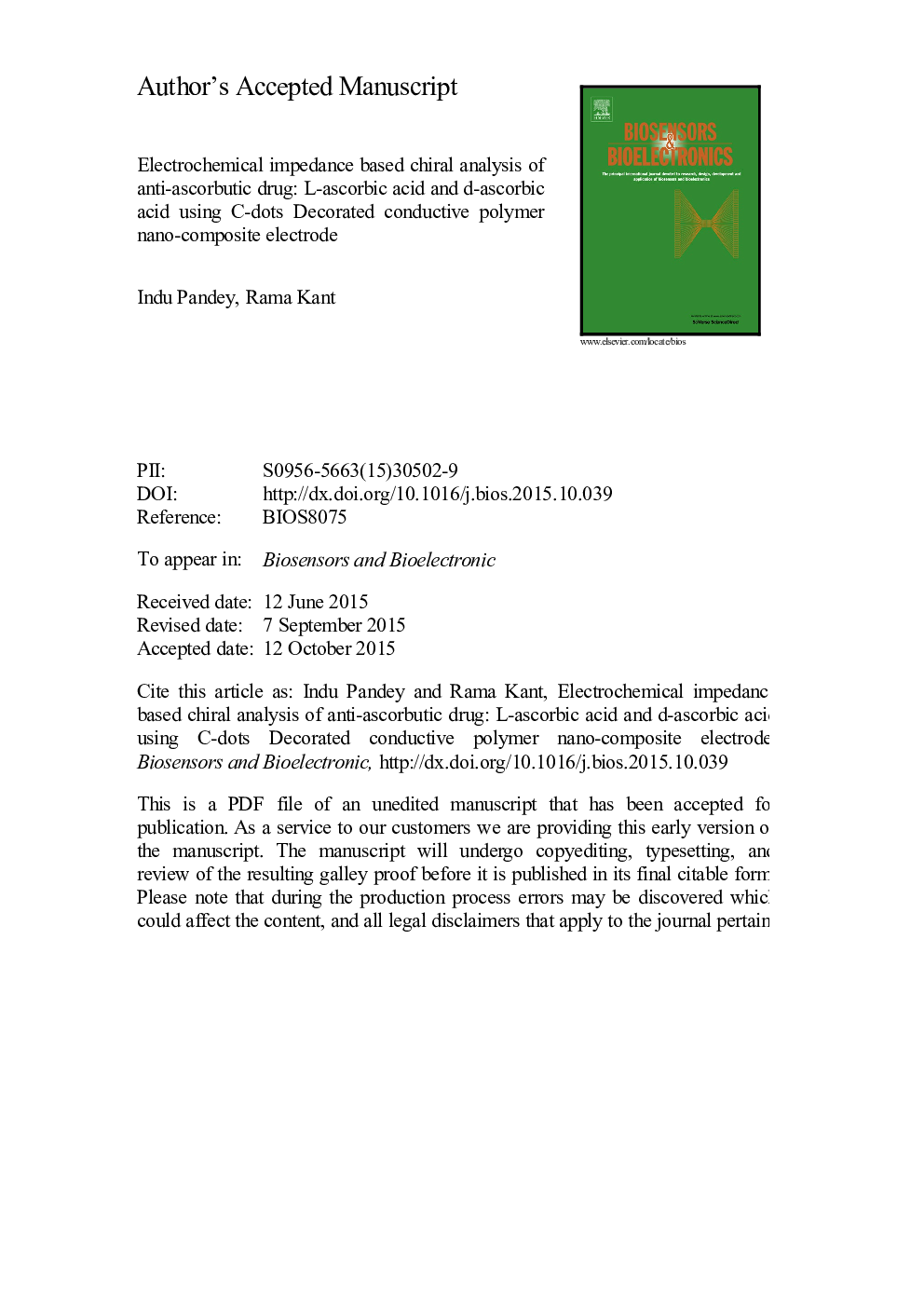| Article ID | Journal | Published Year | Pages | File Type |
|---|---|---|---|---|
| 7231745 | Biosensors and Bioelectronics | 2016 | 33 Pages |
Abstract
Clinical manifestations owing to l-ascorbic acid for scurvy as comparison to d-ascorbic acid and challenges of chiral purity are overcome by using chiral selective conductive polymer nanocomposite which mimics antibodies and enzymes. A novel chiral selective imprinted polyaniline-ferrocene-sulfonic acid film has been electrochemically fabricated on C-dots modified pencil graphite electrode. The performance of the obtained l-ascorbic acid or d-ascorbic acid chiral selective sensor was investigated by electrochemical impedance spectroscopy, cyclic and differential pulse voltammetry. The surface characteristics of the C-dots, chiral sensor before and after the de-doping of chiral d- and l-ascorbic acid were characterized by scanning electron microscopy, Raman spectroscopy and X-ray diffraction spectroscopy. Excellent recognition results were obtained by difference in electron transfer resistance. The proposed chiral sensor is capable of measuring d-ascorbic acid or l-ascorbic acid in aqueous as well as in real and commercial samples within the range of 0.020-0.187Â nM and 0.003-0.232Â nM with detection limit of 0.00073Â nM and 0.00016Â nM, respectively. The proposed method has also been examined for the chiral selective recognition of ascorbic acid isomers (d- and l-) quantitatively, in complicated matrices of real samples.
Related Topics
Physical Sciences and Engineering
Chemistry
Analytical Chemistry
Authors
Indu Pandey, Rama Kant,
